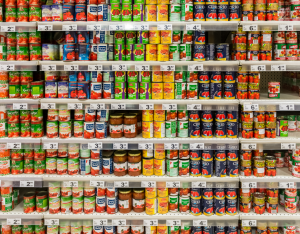by Ginny Hinton | Mar 24, 2016
 Oliver Wendell Holmes, Jr. once said, “The greatest thing in the world is not so much where we are, but in which direction we are moving.” That saying holds true when it comes to our health and our finances.
Oliver Wendell Holmes, Jr. once said, “The greatest thing in the world is not so much where we are, but in which direction we are moving.” That saying holds true when it comes to our health and our finances.
Health and personal financial issues affect millions of Americans. We struggle with epidemic obesity rates, over 79 million Americans have “pre-diabetes”, debt and bankruptcy filings remain high and millions of Americans live on the “financial edge” with less than the recommended three months’ emergency fund set aside for the future. Problems that develop gradually soon become overwhelming.
Many of us, when faced with the need to change, see our problems as unbeatable and “freeze” instead of moving forward. It is true that there is no easy way to lose weight, gain wealth or become debt-free. Even drastic fixes like weight loss surgery or bankruptcy come with huge risks. So, what is the secret?
According to Former HHS Secretary Tommy G.Thompson, small steps are the key! Mr. Thompson stated, “Consumers don’t need to go to extremes – such as joining a gym or taking part in the latest diet plan – to make improvements to their health. But they do need to get active and eat healthier.” No step is too small to get started and you can never be too early or too late. Examples might include walking during your lunch break, cutting out 100 calories a day, saving the change you accumulate each day or tracking your spending for a month. Anything you do daily over a period of time will soon become a habit, or an “automated” behavior. When your healthy behaviors become automated – no matter how small – you’ve just taken a step toward physical and/or financial wellness.
In the end, your health is in your hands. Set realistic goals, take small steps to reach them, learn from the obstacles and believe that you can achieve. And remember, “In the end, the only people who fail are those who do not try.” – David Viscott
Adapted from Small Steps to Health and Wealth, B. O’Neill and K. Ensle, 2013.
by Ginny Hinton | Feb 10, 2016
 Sometimes canned foods get a bad rap. Often, concerns are valid because canned foods tend to be high in unwanted salt and/or sugar. The good news is that you can buy fruits canned in their own juice and vegetables or beans labeled “low-sodium or” no salt added”. By draining and rinsing your canned produce with water, you can also lower the sodium or sugar content and have a healthful – and inexpensive – solution to balancing your child’s nutritional needs. For example, draining and rinsing canned beans lowers their sodium levels by as much as 41 percent.
Sometimes canned foods get a bad rap. Often, concerns are valid because canned foods tend to be high in unwanted salt and/or sugar. The good news is that you can buy fruits canned in their own juice and vegetables or beans labeled “low-sodium or” no salt added”. By draining and rinsing your canned produce with water, you can also lower the sodium or sugar content and have a healthful – and inexpensive – solution to balancing your child’s nutritional needs. For example, draining and rinsing canned beans lowers their sodium levels by as much as 41 percent.
We know that buying local fresh fruits and vegetables in season is a smart idea but kids can be picky. The Brussels sprouts or turnips that are available in the winter might not appeal to a child who only wants peaches. Benefits of buying canned foods include:
- Most canned fruits and vegetables are packaged within hours of being picked. This means the foods keep their peak flavor and nutrients.
- Canned fruits and vegetables are peeled, cut and ready to use in recipes. They “get you there” quicker and easier, usually with the same or even more nutrition than fresh or frozen. For example, did you know that canned pumpkin has three times more Vitamin A than fresh pumpkin?
- Canned fruit and vegetable selections are available year-round. Canned foods can offer reliable, great-tasting ingredients when fresh produce is not in season.
- Canned foods can be used in recipe “hacks” to improve nutrition. (“Hacks” are tricks that aid in the preparation or reduce the cooking time in recipes.) For example, soups can be thickened with a combination of pureed canned white beans and low-sodium vegetable or chicken stock instead of the traditional – and fattening – flour and butter. Canned evaporated skim milk can be used in equal amounts to replace cream in recipes for a fraction of the fat content.
All in all, canned foods can be used in any season to create a healthy plate. Just watch the sugar and salt content to create inexpensive, healthful and tasty meals your kids will love!
References:
- Kendall, A.R. and Dahl, W.J. (2015). Shopping for Health: Vegetables. University of Florida/IFAS electronic publication: edis.ifas.ufl.edu/fs165.
- Jones, J.B., and J.R. Mount. (2009). Sodium Reduction in Canned Bean Varieties by Draining and Rinsing. 209. Institute of Food Technologists Conference Poster. Anaheim, California.
- Tavoletti, R. (2015). The Time is “Ripe” for Canned Food. Canned Food Alliance. http://www.mealtime.org/article/the-time-is-ripe-for-canned-food.aspx?siteLocation=c8e9a60a-8e4d-45ef-9434-624be5cbf61b
- Lydon, K. (2015). It’s No Trick, Treat Yourself to Better Nutrition with These Recipe Hacks. Canned Food Alliance. http://www.mealtime.org/article/its-no-trick-canned-food-recipe-hacks.aspx?siteLocation=c8e9a60a-8e4d-45ef-9434-624be5cbf61b .
by Ginny Hinton | Jul 25, 2015

Young boy drinking a glass of milk
It may be hard to believe, but summer vacation is drawing to a close and school is right around the corner. It’s time to plan for lots of things like new classrooms and teachers, unexpected supply needs, extracurricular activity requests – and hungry kids arriving home from school.
Although it’s easy to succumb to the appeal of ready-made, processed snacks, it can be just as easy and inexpensive to offer healthy but delicious options in single-serve sizes. Following are some quick and simple suggestions:
- Store sliced veggies in the refrigerator and serve with hummus or low-fat ranch dressing.
- Mix dried fruit, unsalted nuts and popcorn in a snack-size bag for a healthful trail mix.
- Wrap sliced, low-sodium deli meats like turkey or ham around an apple wedge.
- Store hard-boiled eggs in the refrigerator for kids to grab any time.
- Purchase fresh, frozen, dried or canned fruits for easy “grab-and-go” options.
- Offer a single serving of individually wrapped string cheese or low-fat yogurt.
- Add club soda to a ½ cup of 100% fruit juice for a tasty alternative to soda.
With just a bit of advanced planning, it’s a snap to halt the snack stampede and wind up with satisfied and healthier school-age kids!
Please click here to answer a few questions to help us better serve you.

by Ginny Hinton | Jun 26, 2015

Photo Credit: Vicki Vargason
On June 20, 2015, a two-year-old boy in Bay County, Florida, drowned in his family’s above-ground pool after being able to get out of the house undetected. Drowning is a very real risk for young children, especially in Florida. Drowning is quick and silent. A child can drown in less than one minute in one inch of water. This year, there have been 39 drowning fatalities in Florida. Of those, 69% (24) have been children under three years of age.
In Florida, we love our beaches, pools, lakes, rivers, and creeks. How can we enjoy Florida’s beautiful water and still protect the ones we love? The answer is simple – but not necessarily easy. Injury prevention experts in Florida agree that the key to water safety is establishing layers of protection. There are three primary layers: Supervision, Barriers, and Emergency Protection.
First, establish a method of supervision and always have a responsible adult watching children who are near water. Even at a party where there are lots of adults available nearby, one should always be assigned as the “water watcher” to keep an eye on the kids.
Second, set up barriers that physically block children from entry to an unsupervised pool or body of water. Effective barriers include the following:
- Pool safety fencing with self-closing, self-latching gates
- Door, window, and pool alarms
- Childproof locks
- Professional pool cover or net (Note: Homemade pool covers may fail and actually trap children in water)
- Locking pet doors
Of course, YOU are always the most important layer of protection, but secondary barrier methods can literally save a life. The cost for setting up barriers can range from $20 to over $1,000. Experts advise that you purchase and use the most protection that you can afford.
The third layer is emergency preparedness. There is a small, precious window for resuscitating a child who is drowning – but only if someone knows what to do. It is a good idea for all adults, not just parents, to become CPR-certified in case of a water emergency. A phone should always be kept handy to call 911 in case something happens.
A 2007-2009 campaign called “Keep Your Eyes on the Kids” reduced the number of children ages one to four who drowned by 15% and the overall drowning rate by 18%. By taking a few important steps, we can do a lot to protect the little ones we love.
References: http://dcf.state.fl.us, http://drowningpreventionfoundation.com, http://nova.edu/ichp/drowning/, http://floridahealth.gov, http://waterproofFL.com, http://flsafepools.com
by Ginny Hinton | Jan 30, 2015

There’s a new law in Florida – and although it’s far from comprehensive, it’s designed to better protect our kids. As of January 1, 2015, Florida law requires that all children riding in vehicles must use a safety seat until their 6th birthday. This means that kids who are 4- or 5-years-old and were previously restrained using just a seat belt must now ride in a car seat or booster seat.
Although much of the publicity about the new law also has reinforced the guideline that children under age 13 are much safer in the back seat, the law itself applies only to children who are not yet six. The law is not a “booster seat” law, because children under age 6 are still safer in a 5-point harness. Once your child is at least 4-years-old, weighs at least 40 pounds, and can sit in position for an entire car trip, you may make the decision to move that child to a booster seat. The fact remains, however, that the child is still much safer in a 5-point harness until he/she reaches the upper height or weight limit of that seat (typically 40-65 pounds). Even though your child may beg to differ, keeping him/her in a harnessed seat longer is one of the best gifts you can offer as a parent!
Want to make sure you’re using the best type of restraint for your child? You can find a nationally certified child passenger safety technician near you at http://cert.safekids.org. Click on “Find a Tech” and search by location.
 Oliver Wendell Holmes, Jr. once said, “The greatest thing in the world is not so much where we are, but in which direction we are moving.” That saying holds true when it comes to our health and our finances.
Oliver Wendell Holmes, Jr. once said, “The greatest thing in the world is not so much where we are, but in which direction we are moving.” That saying holds true when it comes to our health and our finances.




